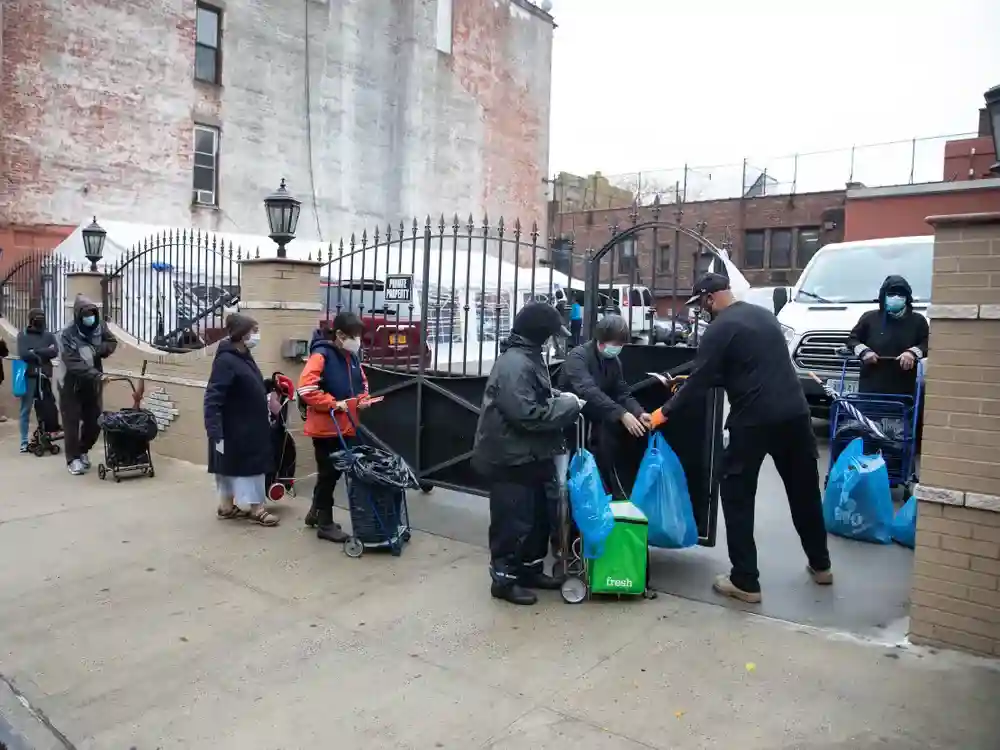As the federal government eliminates regulations enacted at the outset of the COVID-19 epidemic that prevented millions from going hungry during a period of lockdowns and rising unemployment, low-income Americans may soon get reduced food assistance or completely lose their eligibility for the benefits.
An administration objective to abolish hunger in the United States by 2030 might be reversed, anti-hunger activists warned of a projected reduction in aid. To reduce the US debt, the House of Representatives, which is now under Republican control, may possibly look into further cuts to food assistance.

Nearly three million food-insecure older adults did not qualify for Supplemental Nutrition Assistance Program (SNAP) benefits in 2019 because their incomes were too high.
If you’re hungry, the Emergency Food Assistance Program (TEFAP) can help—whether you receive SNAP (formerly known as food stamps) or not.
Learn the two ways you can access benefits, where you can go to get them, and whom to contact for local assistance. (Photo via https://www.ncoa.org/)
According to Eric Mitchell, president of the Coalition to End Hunger, “it will put millions of homes in danger of famine.”
According to Ellen Vollinger of the Food Research & Action Center, an anti-hunger organization, the adjustments mean cuts to Supplemental Nutrition Assistance Program (SNAP) users of around $82 per month starting in March. After the cut, the typical SNAP payout will be roughly $157.
States can now give SNAP clients the full amount of benefits they are eligible for after Congress passed the Families First Coronavirus Response Act in March 2020, as opposed to making reductions based on an individual’s income or other considerations.
Initially, the pandemic public health emergency was connected to the “emergency allotments.” Nevertheless, during the battle over the funding bill in December, Congress reached an agreement to discontinue them in February in exchange for a new summer food program for kids.
Read More: Expanding Food Assistance Has Been Approved By Lawmakers
Michigan Families Eligible For Food Assistance (SNAP) To Receive $95 More
What Will Be The Maximum SNAP EBT Benefit In 2023 For Food Stamps?
The government of President Joe Biden has also declared that the coronavirus public health emergency will be lifted in May. Other modifications, such as the suspension of the three-month time limit for people without children and the exemption of some college students, will come to an end as a result of this.
According to the Center on Budget and Policy Priorities, the additional benefits associated with the pandemic response have recently reached nearly $3 billion per month (CBPP).
The Institute for Policy Research at Northwestern University (NASDAQ: NWE) found that food insufficiency, a more severe form of food insecurity where households occasionally or regularly lack enough to eat, decreased by roughly 9%.
The advantages, according to different research by the Urban Institute, kept 4.2 million individuals out of poverty. Advocates for ending hunger are concerned that the impending reduction in funding may undo these advances.

February 2023 will be the last month for SNAP households to receive the emergency SNAP allotment.Sun-Times file photo
According to statistics gathered by Propel, a technology business that creates financial products for low-income people, 29% of SNAP beneficiaries visited food pantries in states where extended benefits had already stopped as opposed to 22% in places where the benefits were still available in December.
As legislators negotiate a new farm bill, a legislative package passed every five years that covers nutrition, commodities, and conservation programs, debate over US spending on food assistance is set to intensify in the coming months.
More than 76% of the $428 billion cost of the latest farm bill went toward food assistance programs, which yearly provide aid to 41 million individuals. The bill runs out on September 30.
Republicans traditionally oppose benefit expansion, but Democrats typically support it.

People line up outside a food pantry in Brooklyn, New York, United States, on Nov. 12, 2020. Michael Nagle/Wang Ying/Xinhua/Getty Images
Democrat on the House Agricultural Committee Rep. Jim McGovern of Massachusetts told Reuters in an email that “the SNAP benefit was already substantially too low, even before the outbreak.”
He declared, “We need to significantly increase benefit levels to reflect the reality of food costs today.
Read More: Social Security Income Recipients Now Allowed To Get Food Benefits; Who Is Qualified?
Older Americans Could Be Most Affected By The Upcoming Food Benefit Cut
According to the Department of Labor Statistics, the cost of food has increased by 10% since last year.
In the course of discussing the agriculture bill, House Republicans have hinted that they may examine and tighten the SNAP work requirements.
In the ongoing debt limit debate, the House Budget Committee has also suggested SNAP budget reductions.
